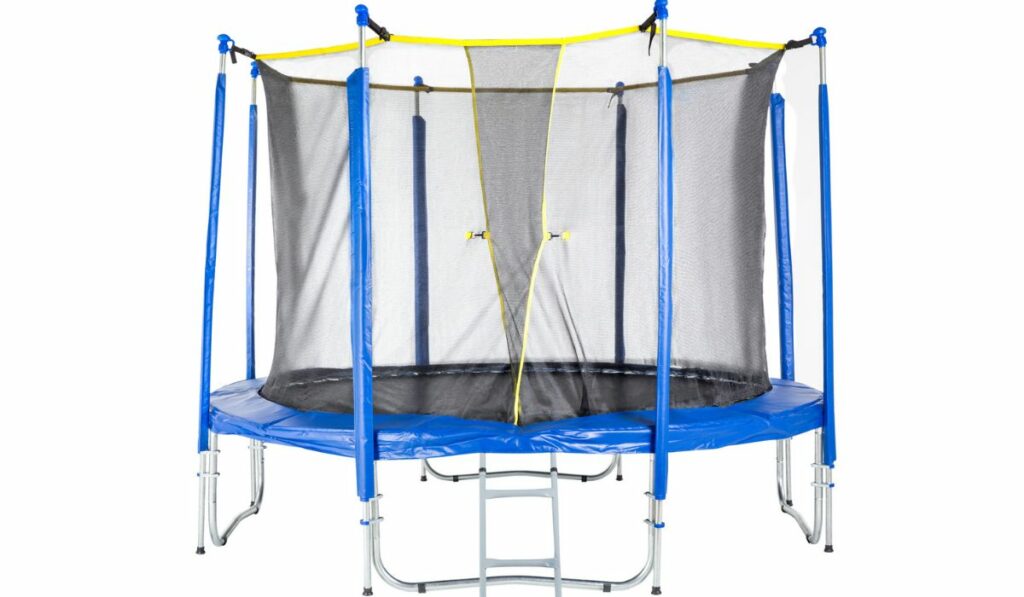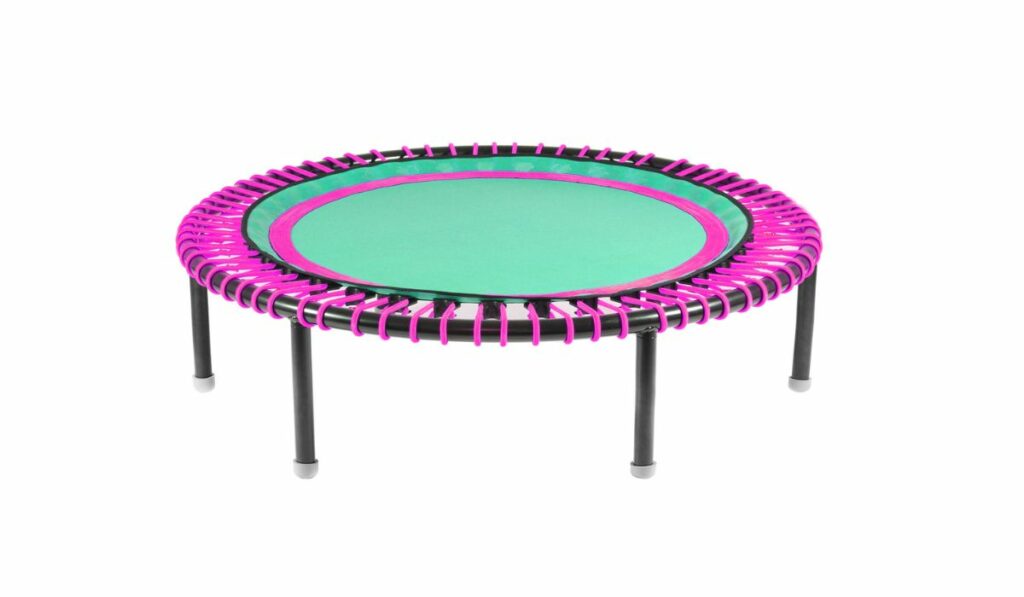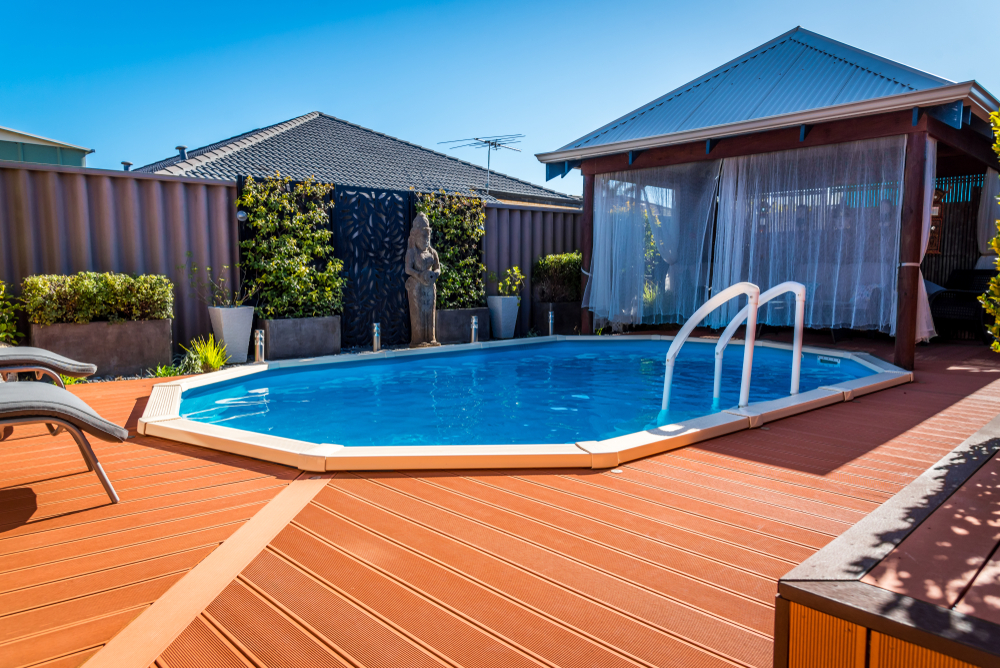Taking inspiration from circus performers, George Nissen built the first trampoline or ‘tumbling device’ that is still capturing hearts and imaginations more than 75 years later. He originally created the trampoline to improve his training, but he ended up improving lives everywhere by creating something that allows us to enjoy precious moments of pure, unadulterated joy and freedom.
A trampoline is a device made with a taut piece of fabric that’s stretched across a durable steel frame. Invented in 1934, it gets its name from the Spanish word for diving board, “el tramplin.” Today, trampolines are used for fun outdoor activities for kids as well as exercise sessions for adults.
Whether you’re a trampoline lover or haven’t yet tried one for yourself, there’s plenty to know about this unique creation. Let’s take a closer look at the origin story of the trampoline and what it’s used for today.
What Is a Trampoline?

A trampoline is simply a device that consists of a taut, strong piece of fabric stretched between a sturdy steel frame with multiple coiled springs.
However, it’s important to note that not every trampoline is designed with springs. Springfree Trampolines (on Amazon) use glass-reinforced plastic rods instead.
You can use trampolines both competitively and recreationally:
Recreational Trampolines
Recreational trampolines are usually made with waterproof canvas and are available in a wide variety of sizes and shapes. Unless they’re very small to begin with, you’ll have a difficult time trying to move them.
These trampolines are often found in adult health clubs, private backyards, children’s playgrounds, and school gyms.
Competitive Trampolines
Competitive trampolines are much sturdier and are designed with specially developed fabric. They’re much easier to transport, making them perfect for athletes competing in different locations around the world.
These trampolines come in a standardized size and shape, and use more coiled springs, allowing athletes to perform more complicated stunts and higher bounces.
A Brief History of the Trampoline
16-year-old American George Nissen first came up with the idea of a trampoline after a visit to the circus in 1930. As he watched all the aerialists drop from their high perches and safely land with only a soft bounce on the net below, he wondered whether he could create a device that would allow people to continue bouncing.
Nissen made the first prototype with Larry Griswold in 1934, using only a canvas bed and some rubber springs. Since he was a gymnast himself, he soon discovered the trampoline’s potential for use in competitive sports, and as a fun, engaging activity for everybody else.
The device’s potential was further discovered during World War II. The military started using it to train pilots, allowing them to practice how to properly reorient themselves after performing difficult air maneuvers. In fact, the pilots simulated combat conditions by jumping and pirouetting in midair with the help of trampolines.
This relationship with the military later extended to their space program, partly because of a fortuitous meeting. Around the end of the war, George Nissen met a pilot who had undergone trampoline training. Since both men were in the Navy, they shared a fraternal bond, hit it off, and eventually became life-long friends.
That pilot was Scott Carpenter, someone who later became a part of the original Mercury 7 astronaut team. Together, these men helped introduce the trampoline into NASA space training and created a game called Spaceball.
Where Does the Name “Trampoline” Come From?
The story of where the name trampoline comes from is a very interesting one, as it surprisingly doesn’t have anything to do with the English language.
George Nissen was also a gymnast and a part of the high school diving team. He continued diving after high school as well, and in 1937, he performed his special act, the Three Leonardos, with his teammates in Mexico.
It was there that the name for his new contraption “trampoline” was born. A diving board is called “el tramplin” in Spanish, and Nissen simply adopted the term, with a slightly different spelling.
What Are Trampolines Used for Today?

Although trampolines were used for training pilots during World War II, today they are used for a range of different purposes, including the following:
Outdoor Activities
Trampolines are great for kids who are filled with restless energy and want to engage in some sort of physical activity. For parents who are worried about their children’s increasing screen time, trampolines are an excellent way to help them rediscover a taste for sports with their friends. There are even a wide variety of trampolines for the whole family.
Fun Games
While bouncing alone can be fun, there are several different accessories available today that allow you to play various games with others while jumping on the trampoline. You can even play variations on football and basketball, and perform more complex jumps with trampoline accessories.
Stress Reliever
Since trampolining increases the number of endorphins released by your brain, it can help combat anxiety, stress, and depression. Regular rebounding sessions on the trampoline can promote healthier sleeping patterns, help you relax, and give you more energy.
Low-Impact Exercises
While trampolining provides an incredibly intense workout for the bones and muscles, the device absorbs around 80% of the shock from the jump.
Unlike tennis and jogging, it allows you to have an all-around workout without risking injury to your joints, ankles, or needs. This makes the trampoline particularly beneficial for people undergoing rehabilitation or those with less mobility.








